| CARVIEW |
Select Language
HTTP/2 301
server: envoy
x-frame-options: SAMEORIGIN
cache-control: public, s-maxage=86400, max-age=0, must-revalidate
location: https://www.slideshare.net/slideshow/implementing-the-media-fragments-uri-specification/3921354
x-envoy-upstream-service-time: 371
p3p: CP="OTI DSP COR CUR ADM DEV PSD IVD CONo OUR IND"
x-content-type-options: nosniff
accept-ranges: bytes
age: 0
date: Fri, 10 Oct 2025 22:44:26 GMT
via: 1.1 varnish
x-served-by: cache-bom-vanm7210084-BOM
x-cache: MISS
x-cache-hits: 0
x-timer: S1760136265.947242,VS0,VE1182
vary: accept-encoding, x-bot
set-cookie: browser_id=a188a8a6-a9ec-42d7-89d7-cb38eebee665; Domain=.slideshare.net; Path=/; Expires=Wed, 09 Oct 2030 22:44:26 GMT
strict-transport-security: max-age=63072000; includeSubDomains; preload
alt-svc: h3=":443";ma=86400,h3-29=":443";ma=86400,h3-27=":443";ma=86400
content-length: 95
HTTP/2 200
content-type: text/html; charset=utf-8
server: envoy
x-frame-options: SAMEORIGIN
cache-control: public, s-maxage=86400, max-age=0, must-revalidate
x-powered-by: Next.js
etag: "m7yrdx9lockyqo"
content-encoding: gzip
x-envoy-upstream-service-time: 470
p3p: CP="OTI DSP COR CUR ADM DEV PSD IVD CONo OUR IND"
x-content-type-options: nosniff
accept-ranges: bytes
age: 0
date: Fri, 10 Oct 2025 22:44:28 GMT
via: 1.1 varnish
x-served-by: cache-bom-vanm7210084-BOM
x-cache: MISS
x-cache-hits: 0
x-timer: S1760136266.142135,VS0,VE1890
vary: accept-encoding, x-bot
strict-transport-security: max-age=63072000; includeSubDomains; preload
alt-svc: h3=":443";ma=86400,h3-29=":443";ma=86400,h3-27=":443";ma=86400
content-length: 126435
Implementing the Media Fragments URI Specification | PDF 
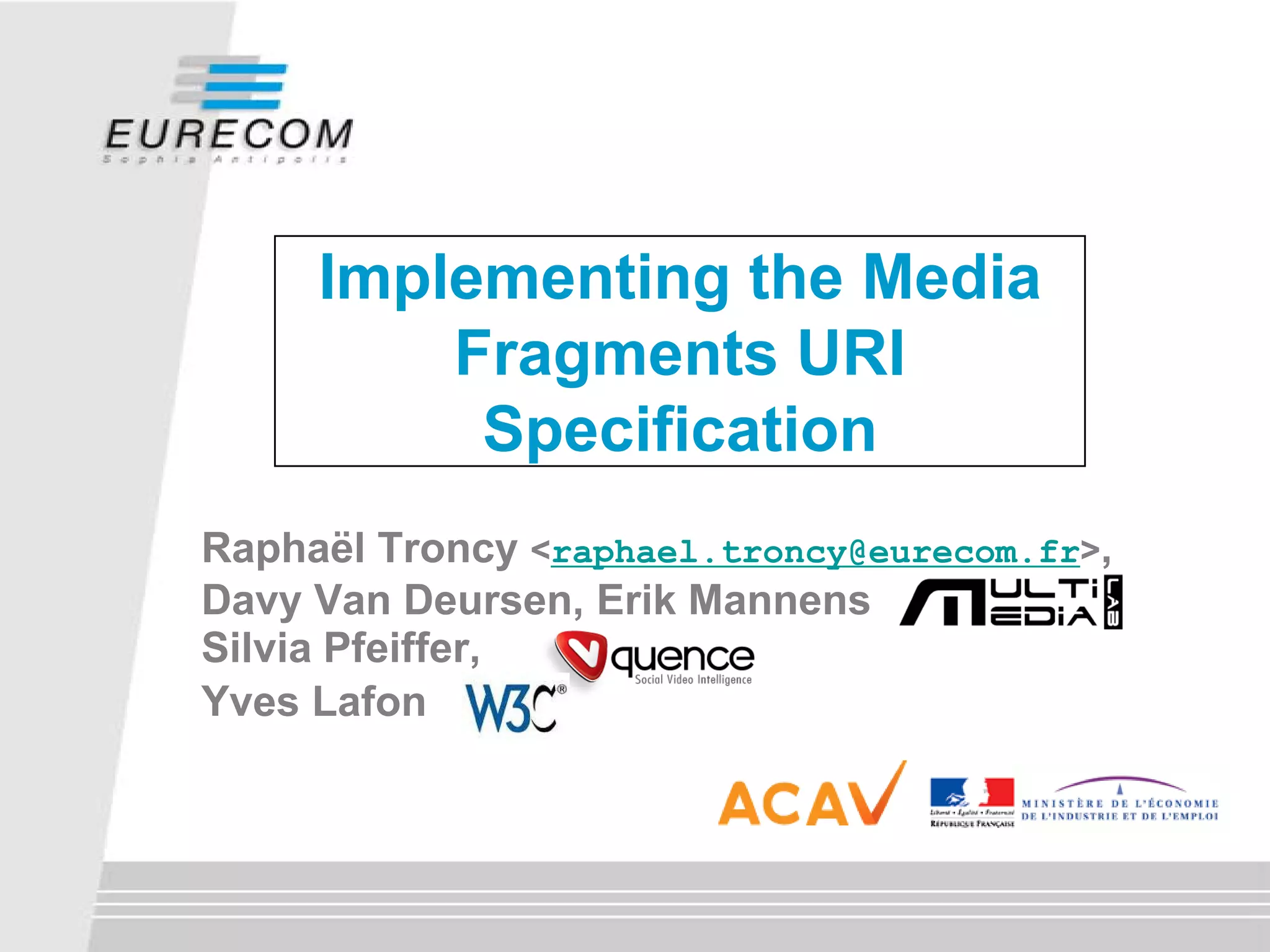
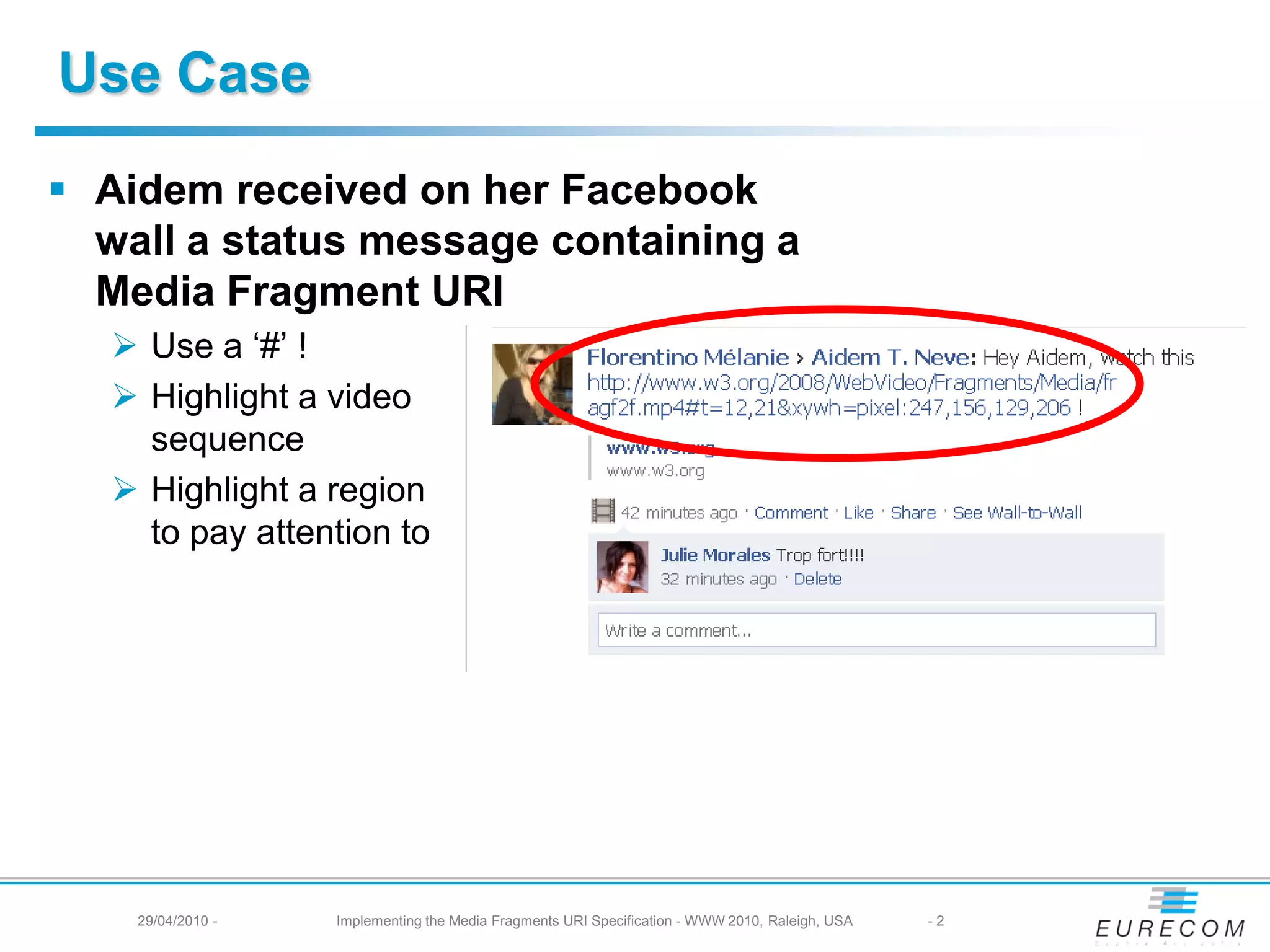
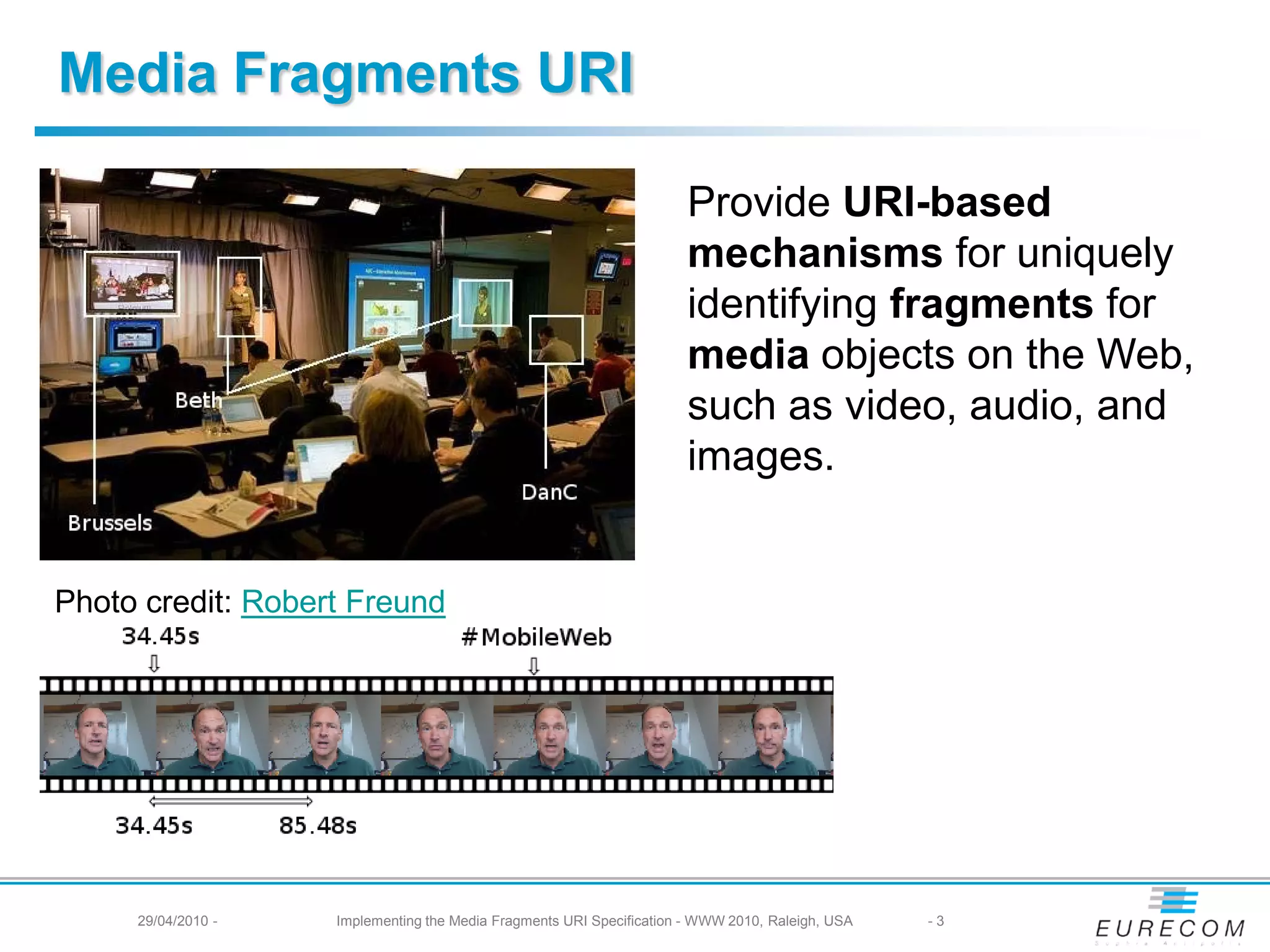
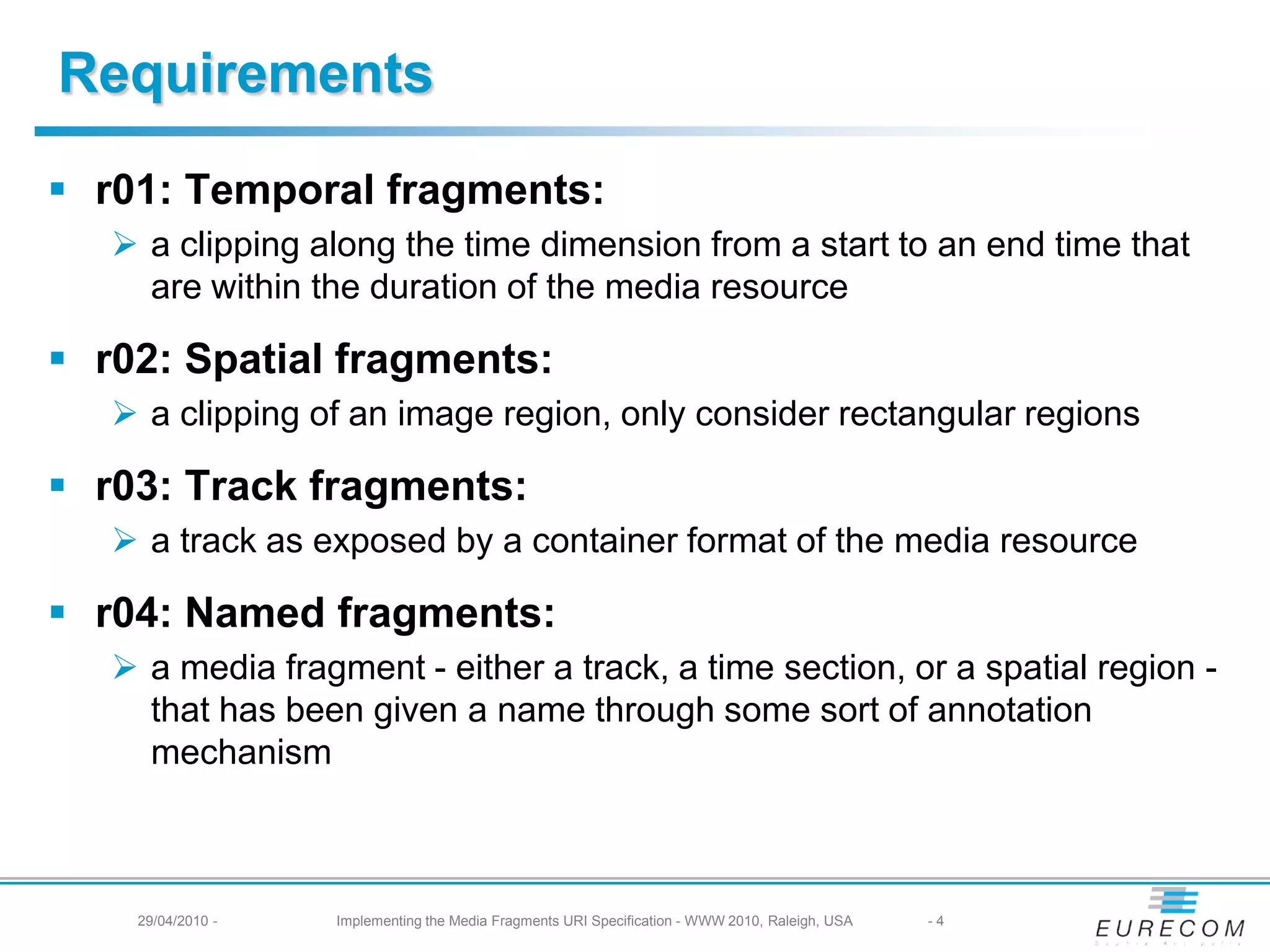
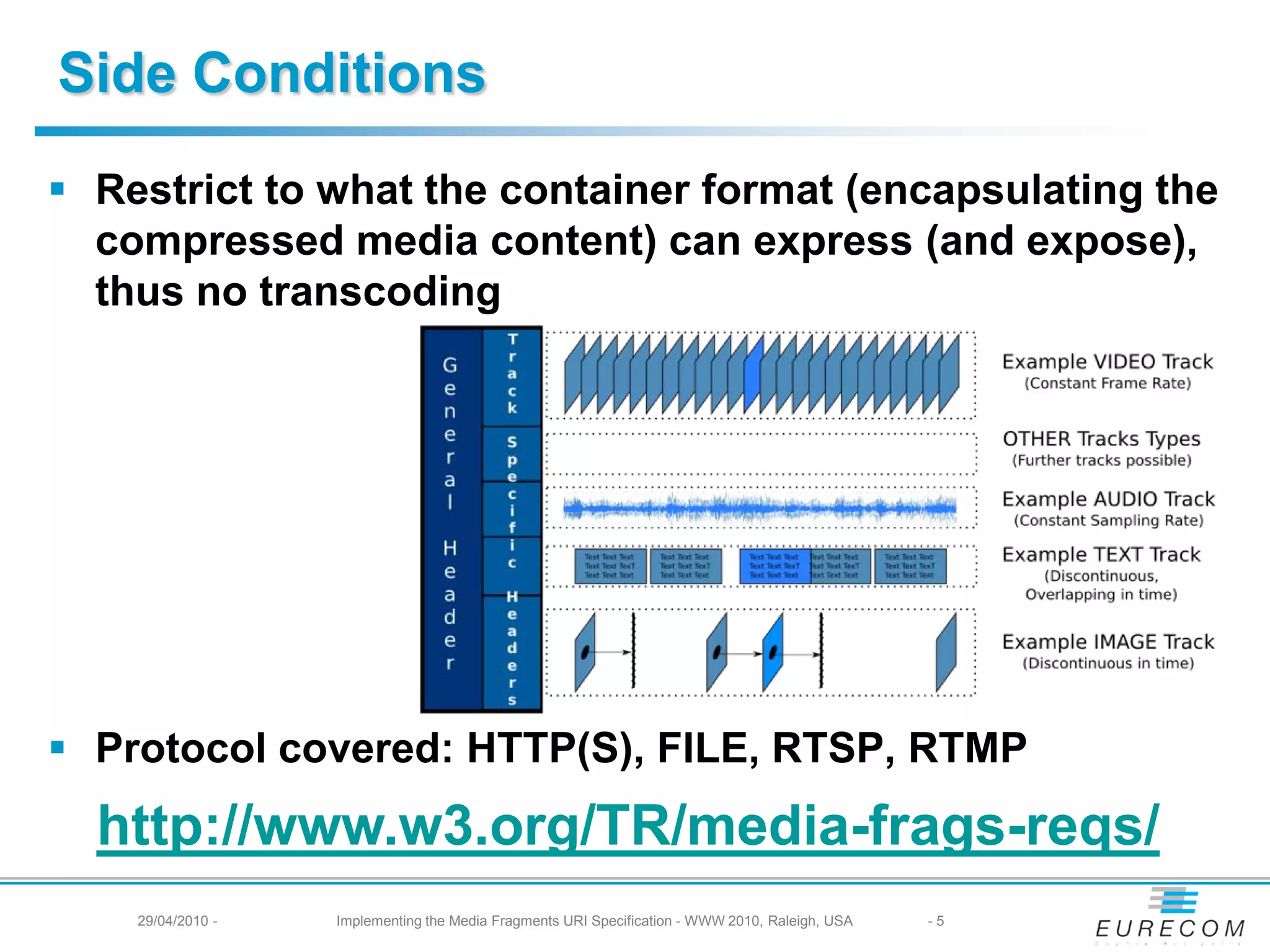
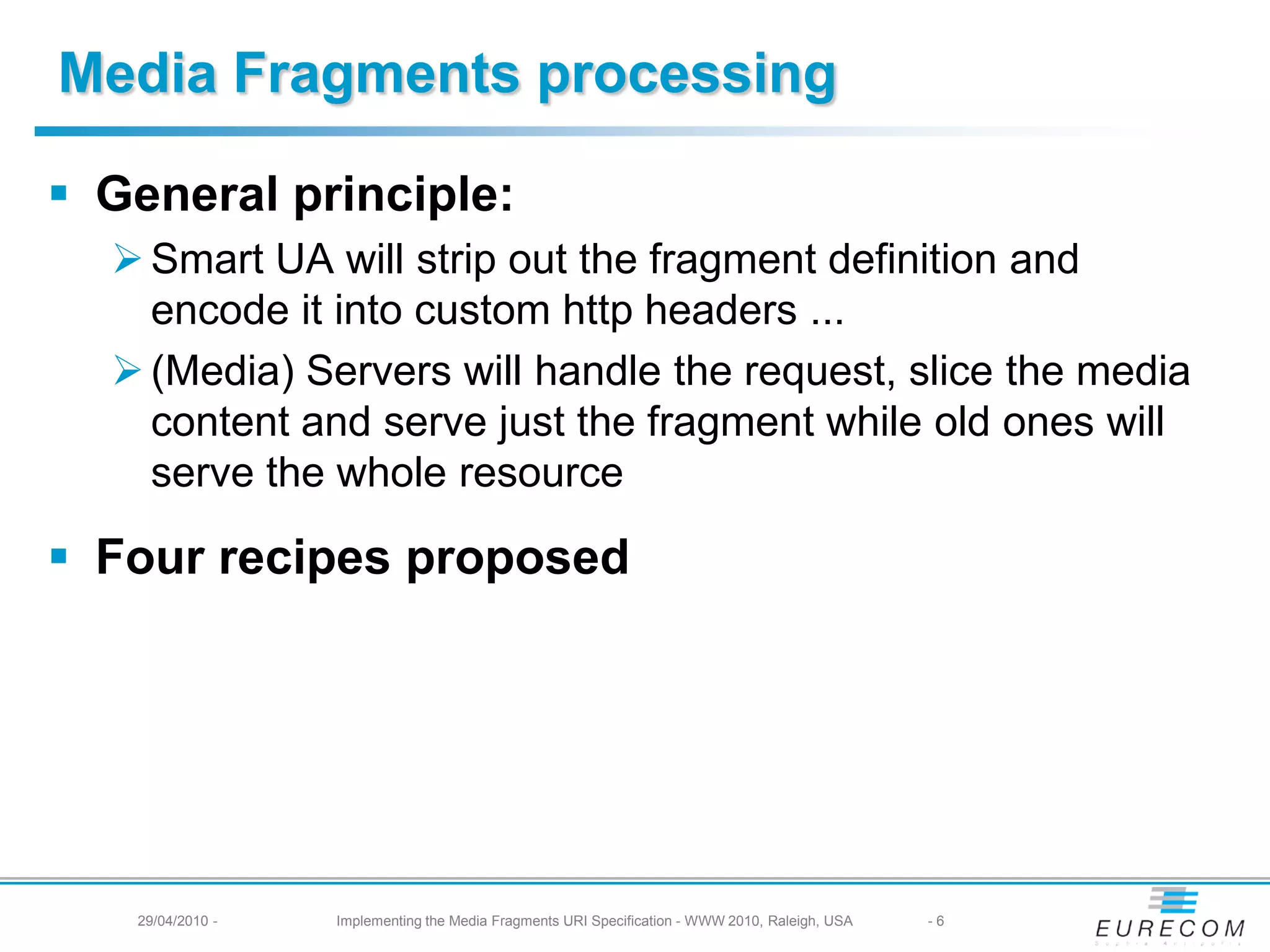
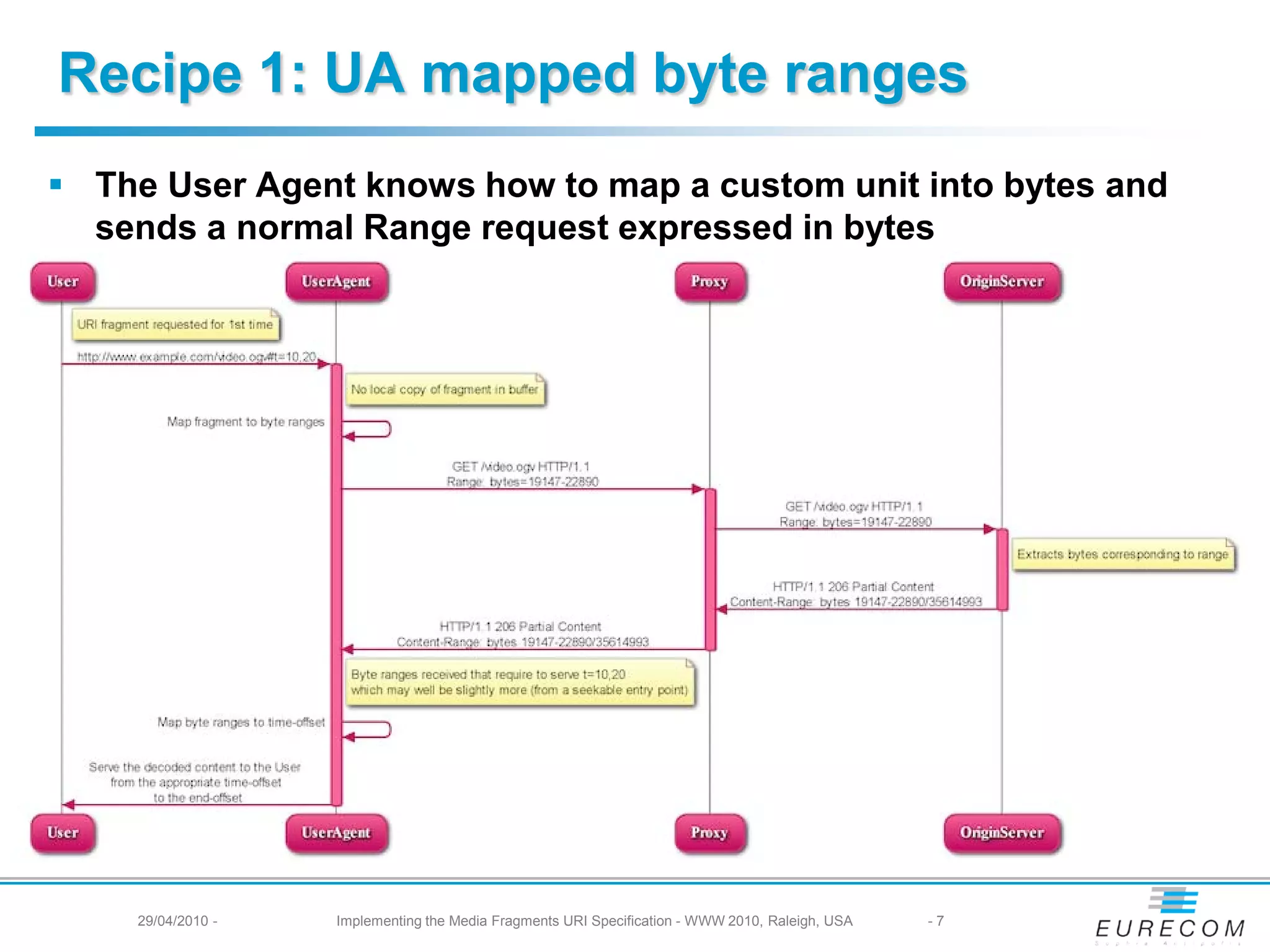
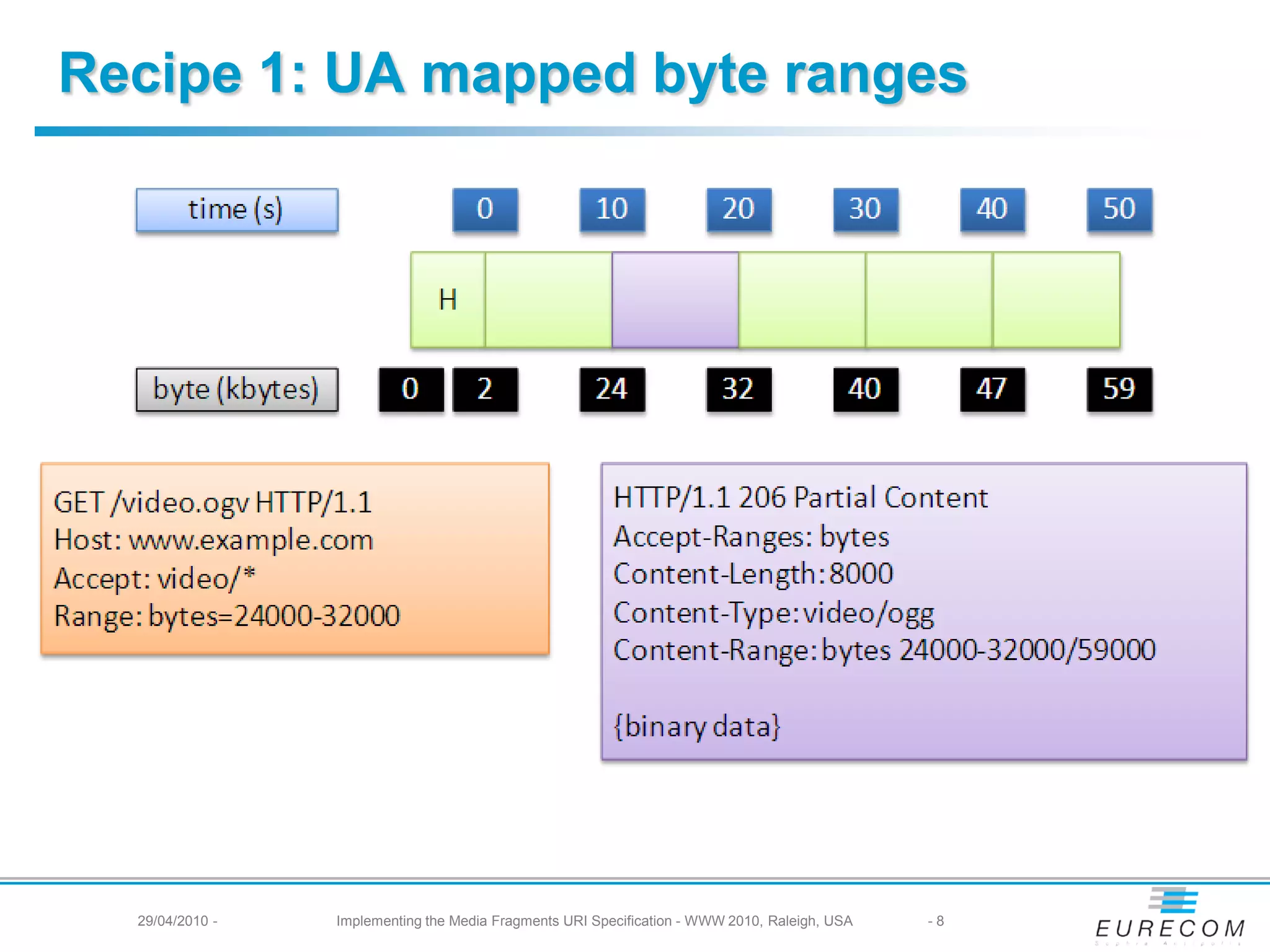
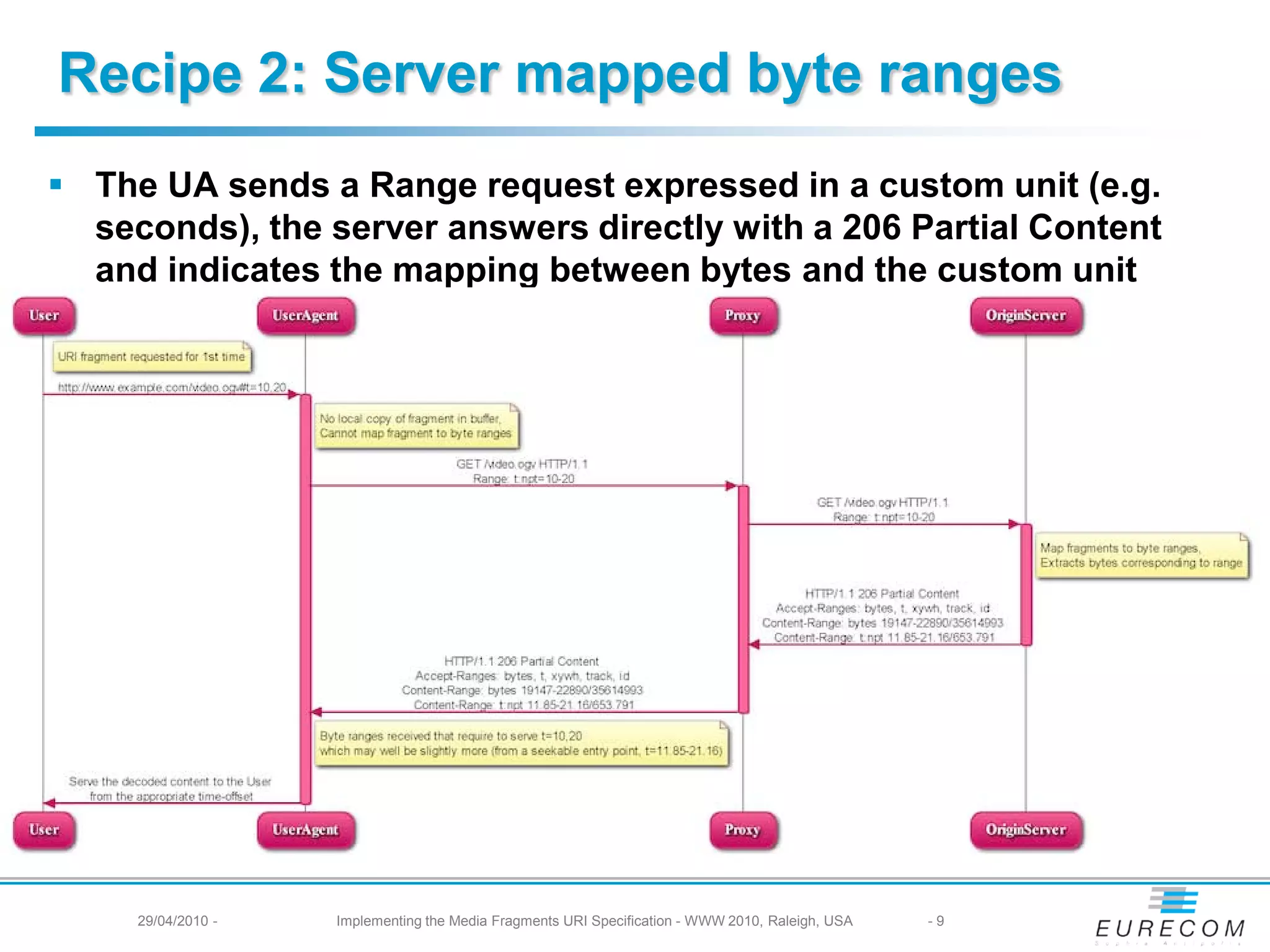
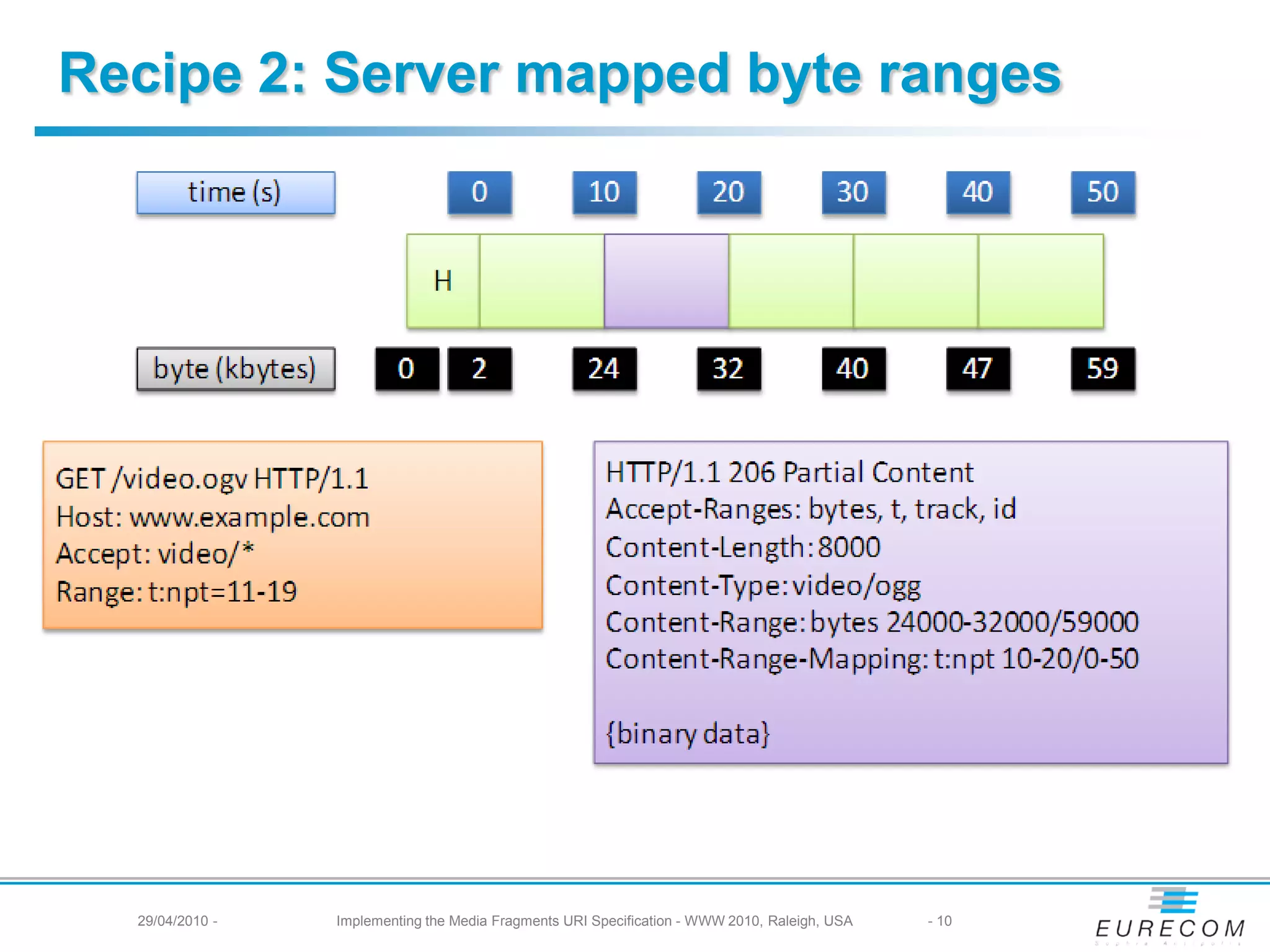
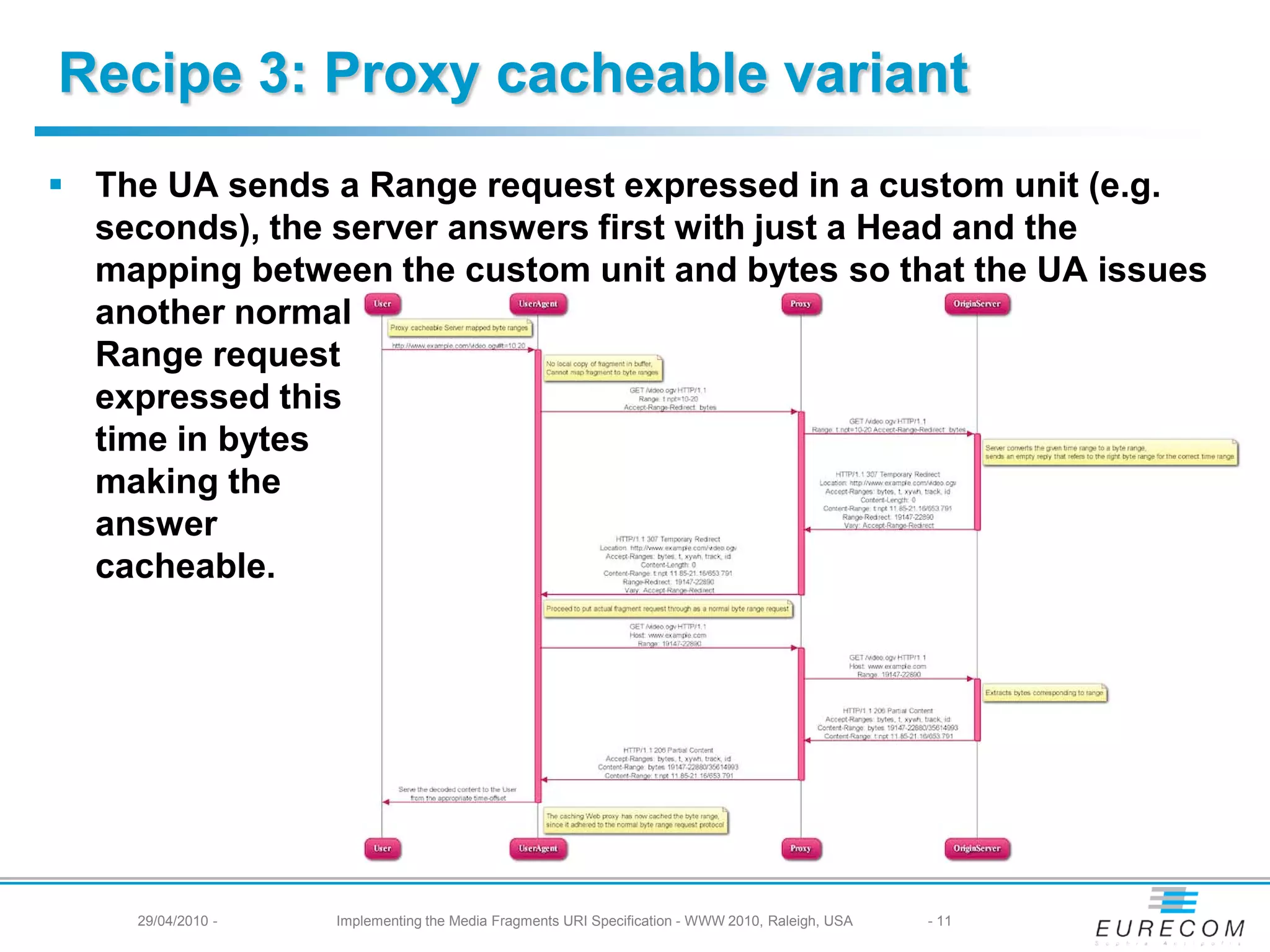
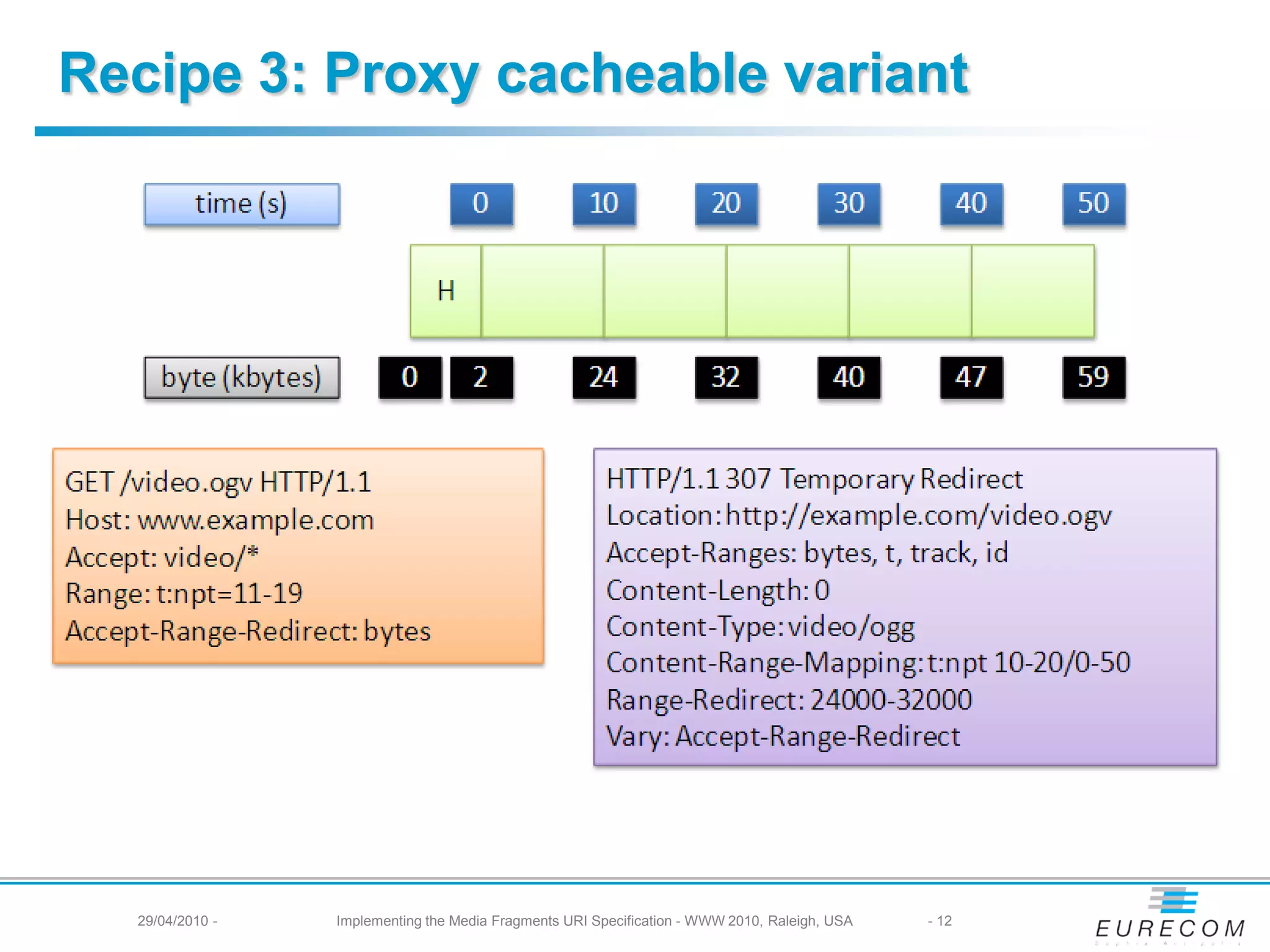
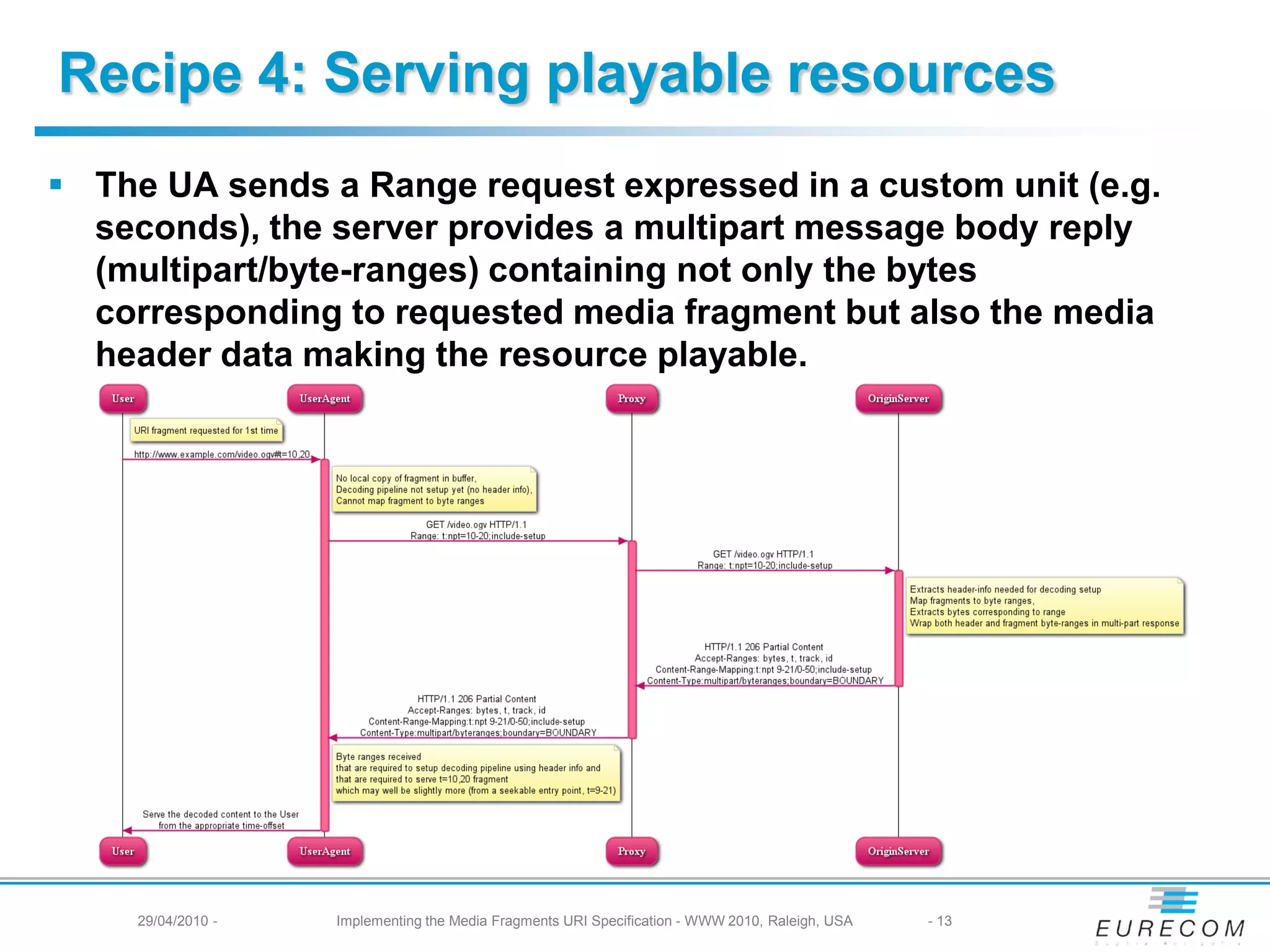
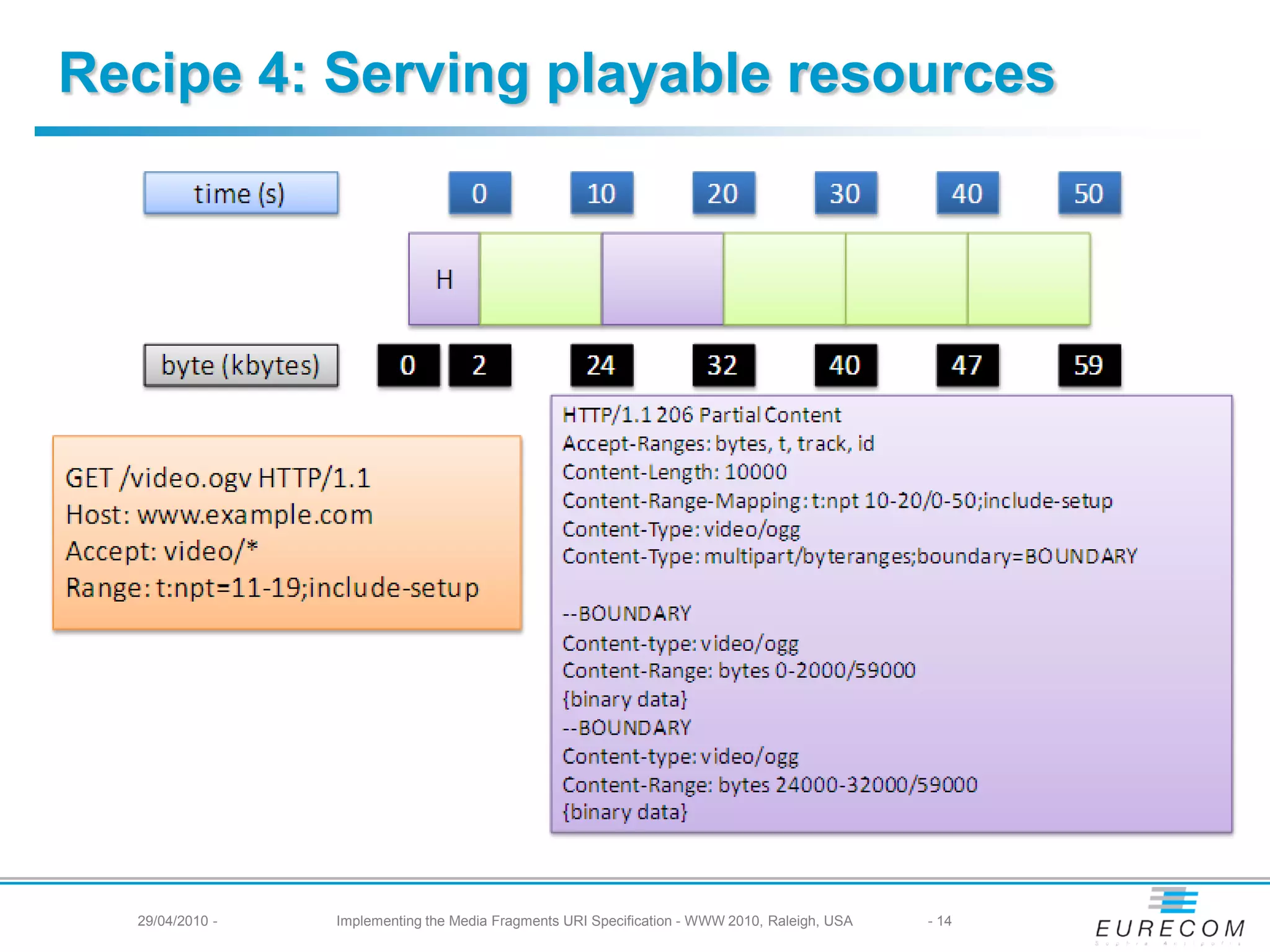
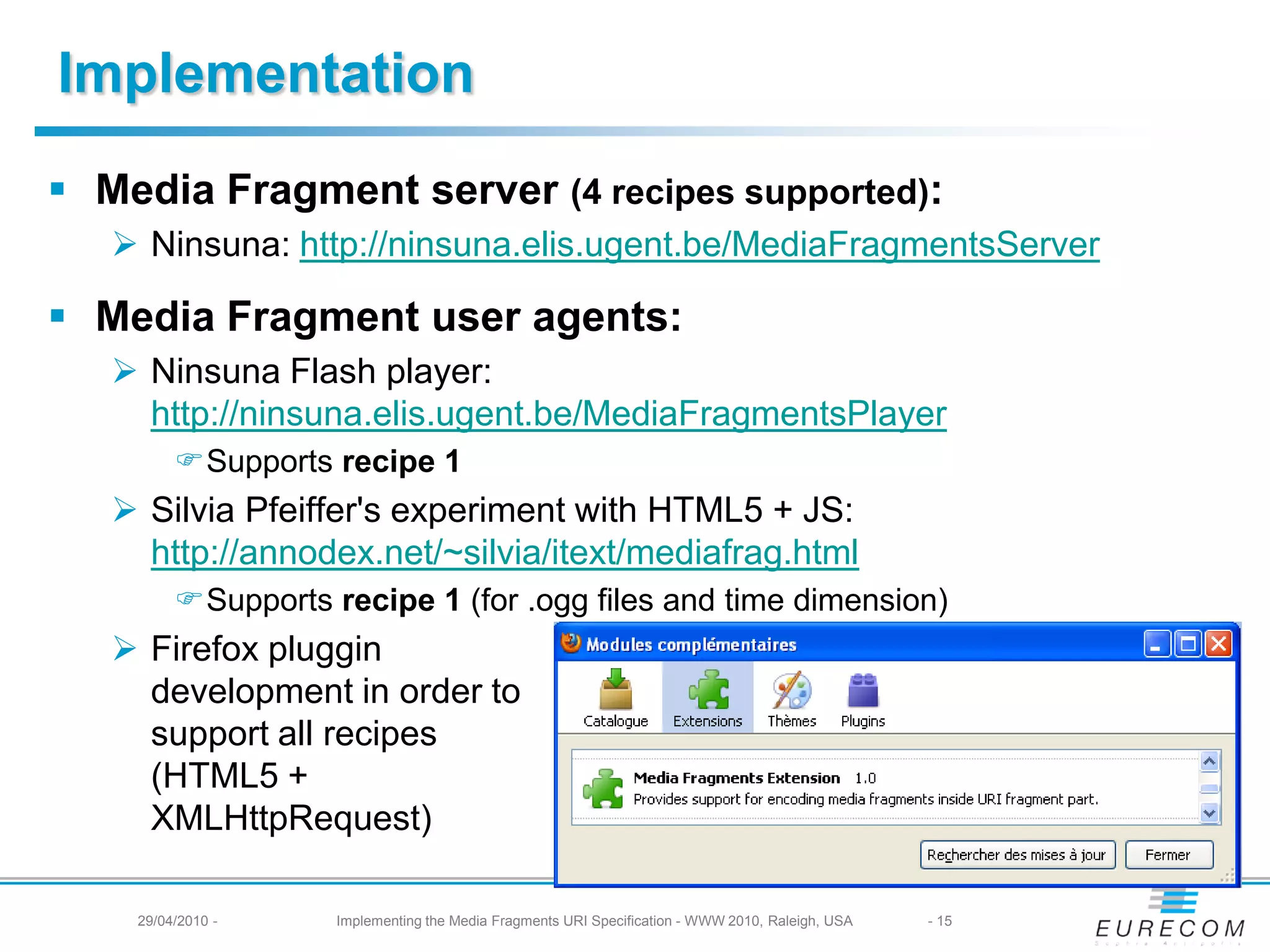
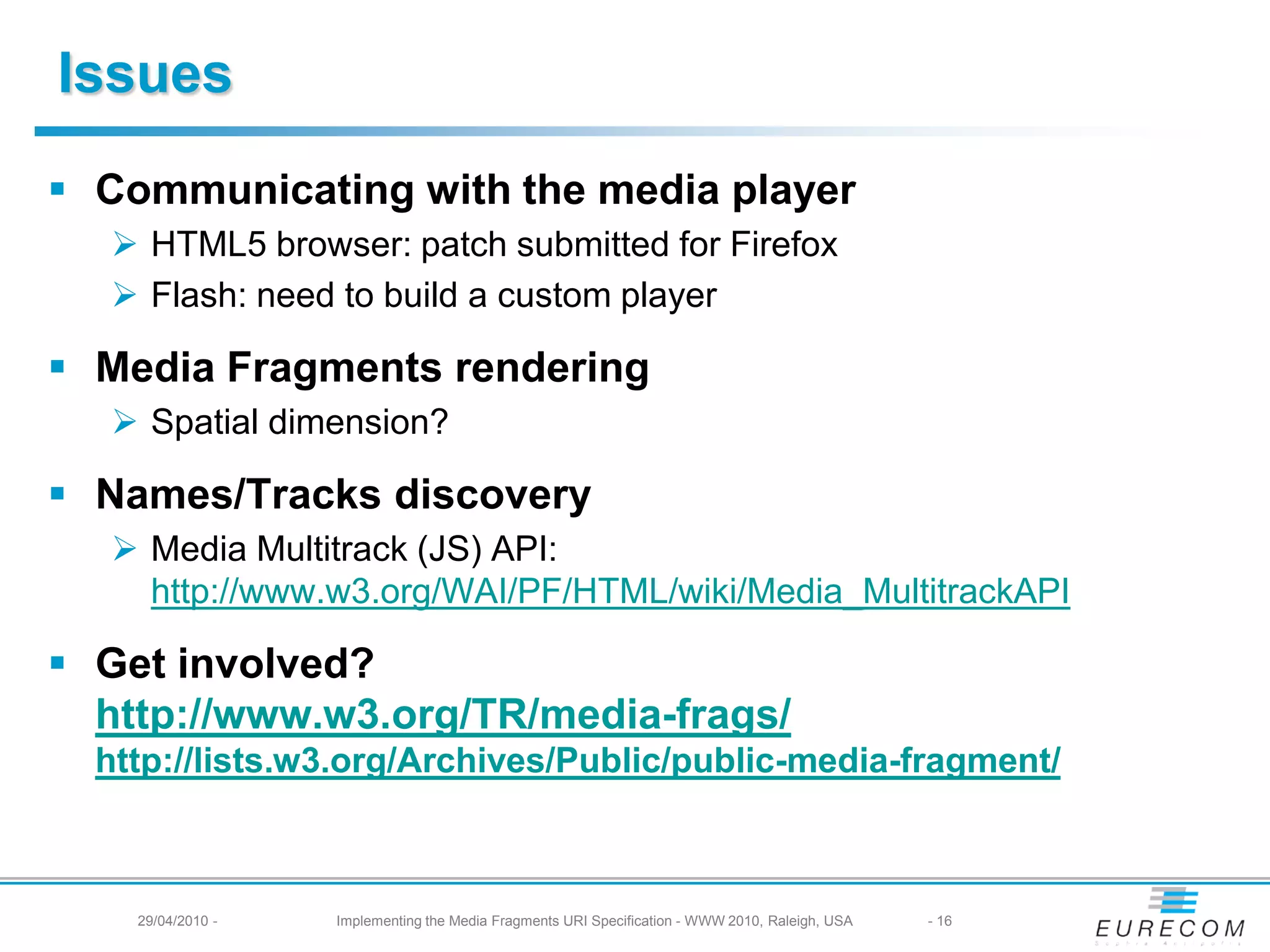

Uploaded byRaphael Troncy
18,542 views
Implementing the Media Fragments URI Specification
The document discusses the implementation of the Media Fragments URI specification, which allows for the identification of media fragments such as video and images using URIs. It outlines requirements for temporal, spatial, track, and named fragments, and provides several recipes for processing these fragments effectively. Additionally, it mentions support for various user agents and servers, along with issues related to compatibility and rendering.
















More Related Content
Similar to Implementing the Media Fragments URI Specification
More from Raphael Troncy
Implementing the Media Fragments URI Specification
- 1. Implementing the Media Fragments URI Specification Raphaël Troncy <raphael.troncy@eurecom.fr>, Davy Van Deursen, Erik Mannens Silvia Pfeiffer, Yves Lafon
- 2. Use Case Aidemreceived on her Facebook wall a status message containing a Media Fragment URI Use a ‘#’ ! Highlight a video sequence Highlight a region to pay attention to 29/04/2010 - Implementing the Media Fragments URI Specification - WWW 2010, Raleigh, USA -2
- 3. Media Fragments URI Provide URI-based mechanisms for uniquely identifying fragments for media objects on the Web, such as video, audio, and images. Photo credit: Robert Freund 29/04/2010 - Implementing the Media Fragments URI Specification - WWW 2010, Raleigh, USA -3
- 4. Requirements r01: Temporalfragments: a clipping along the time dimension from a start to an end time that are within the duration of the media resource r02: Spatial fragments: a clipping of an image region, only consider rectangular regions r03: Track fragments: a track as exposed by a container format of the media resource r04: Named fragments: a media fragment - either a track, a time section, or a spatial region - that has been given a name through some sort of annotation mechanism 29/04/2010 - Implementing the Media Fragments URI Specification - WWW 2010, Raleigh, USA -4
- 5. Side Conditions Restrictto what the container format (encapsulating the compressed media content) can express (and expose), thus no transcoding Protocol covered: HTTP(S), FILE, RTSP, RTMP https://www.w3.org/TR/media-frags-reqs/ 29/04/2010 - Implementing the Media Fragments URI Specification - WWW 2010, Raleigh, USA -5
- 6. Media Fragments processing General principle: Smart UA will strip out the fragment definition and encode it into custom http headers ... (Media) Servers will handle the request, slice the media content and serve just the fragment while old ones will serve the whole resource Four recipes proposed 29/04/2010 - Implementing the Media Fragments URI Specification - WWW 2010, Raleigh, USA -6
- 7. Recipe 1: UAmapped byte ranges The User Agent knows how to map a custom unit into bytes and sends a normal Range request expressed in bytes 29/04/2010 - Implementing the Media Fragments URI Specification - WWW 2010, Raleigh, USA -7
- 8. Recipe 1: UAmapped byte ranges 29/04/2010 - Implementing the Media Fragments URI Specification - WWW 2010, Raleigh, USA -8
- 9. Recipe 2: Servermapped byte ranges The UA sends a Range request expressed in a custom unit (e.g. seconds), the server answers directly with a 206 Partial Content and indicates the mapping between bytes and the custom unit 29/04/2010 - Implementing the Media Fragments URI Specification - WWW 2010, Raleigh, USA -9
- 10. Recipe 2: Servermapped byte ranges 29/04/2010 - Implementing the Media Fragments URI Specification - WWW 2010, Raleigh, USA - 10
- 11. Recipe 3: Proxycacheable variant The UA sends a Range request expressed in a custom unit (e.g. seconds), the server answers first with just a Head and the mapping between the custom unit and bytes so that the UA issues another normal Range request expressed this time in bytes making the answer cacheable. 29/04/2010 - Implementing the Media Fragments URI Specification - WWW 2010, Raleigh, USA - 11
- 12. Recipe 3: Proxycacheable variant 29/04/2010 - Implementing the Media Fragments URI Specification - WWW 2010, Raleigh, USA - 12
- 13. Recipe 4: Servingplayable resources The UA sends a Range request expressed in a custom unit (e.g. seconds), the server provides a multipart message body reply (multipart/byte-ranges) containing not only the bytes corresponding to requested media fragment but also the media header data making the resource playable. 29/04/2010 - Implementing the Media Fragments URI Specification - WWW 2010, Raleigh, USA - 13
- 14. Recipe 4: Servingplayable resources 29/04/2010 - Implementing the Media Fragments URI Specification - WWW 2010, Raleigh, USA - 14
- 15. Implementation Media Fragmentserver (4 recipes supported): Ninsuna: https://ninsuna.elis.ugent.be/MediaFragmentsServer Media Fragment user agents: Ninsuna Flash player: https://ninsuna.elis.ugent.be/MediaFragmentsPlayer Supports recipe 1 Silvia Pfeiffer's experiment with HTML5 + JS: https://annodex.net/~silvia/itext/mediafrag.html Supports recipe 1 (for .ogg files and time dimension) Firefox pluggin development in order to support all recipes (HTML5 + XMLHttpRequest) 29/04/2010 - Implementing the Media Fragments URI Specification - WWW 2010, Raleigh, USA - 15
- 16. Issues Communicating withthe media player HTML5 browser: patch submitted for Firefox Flash: need to build a custom player Media Fragments rendering Spatial dimension? Names/Tracks discovery Media Multitrack (JS) API: https://www.w3.org/WAI/PF/HTML/wiki/Media_MultitrackAPI Get involved? https://www.w3.org/TR/media-frags/ https://lists.w3.org/Archives/Public/public-media-fragment/ 29/04/2010 - Implementing the Media Fragments URI Specification - WWW 2010, Raleigh, USA - 16
